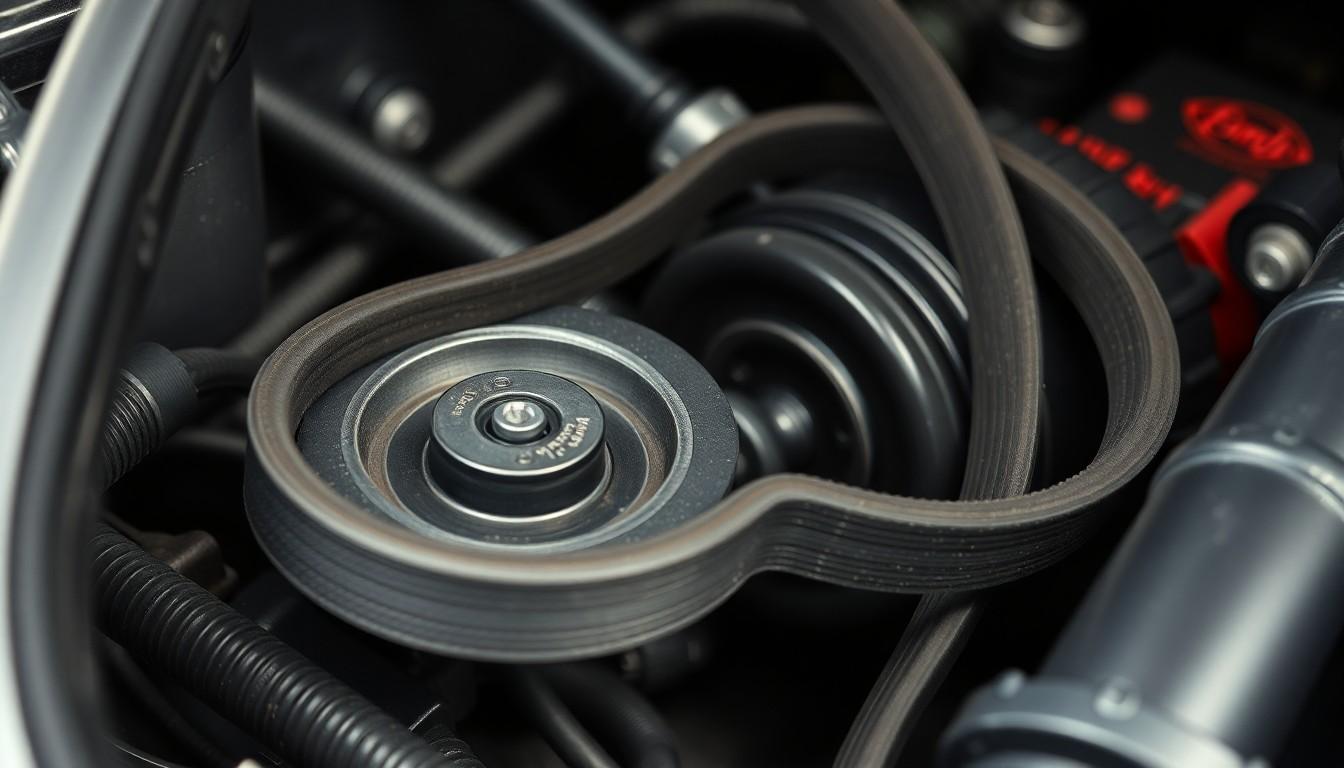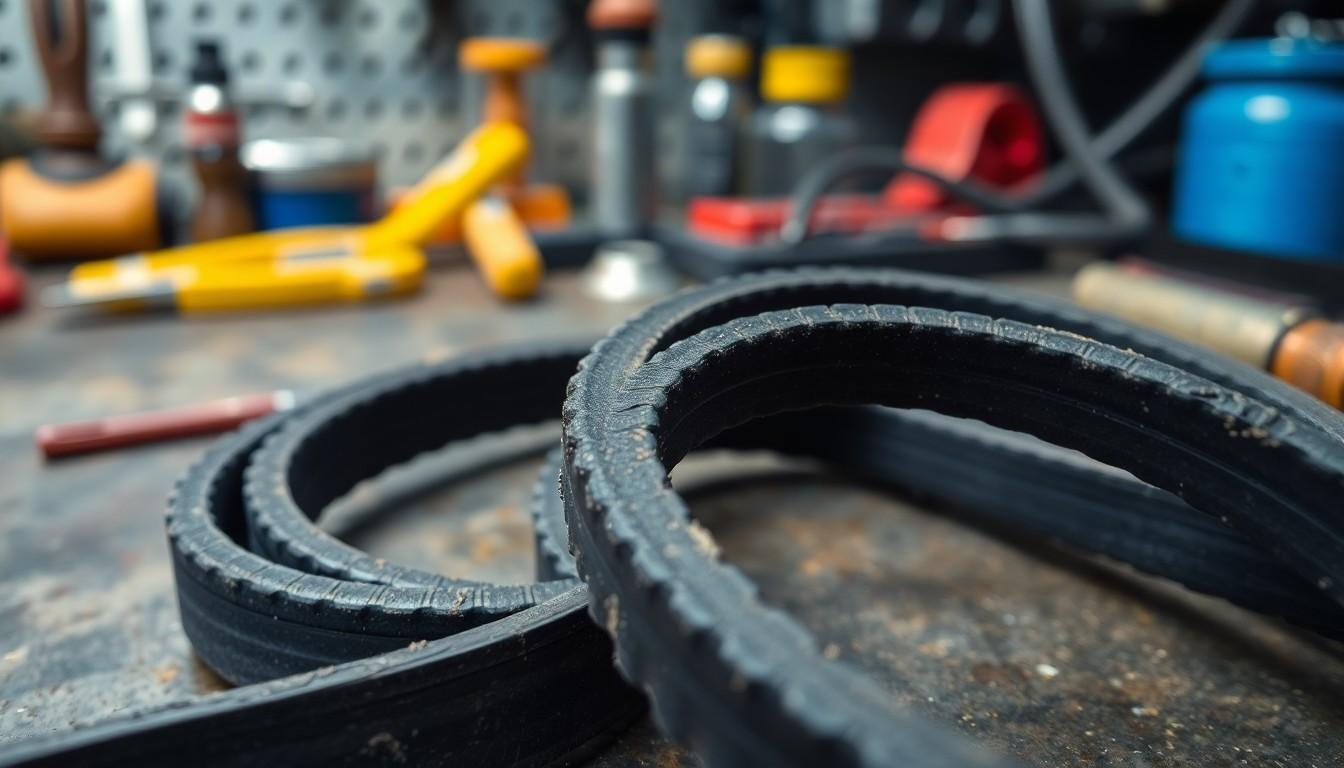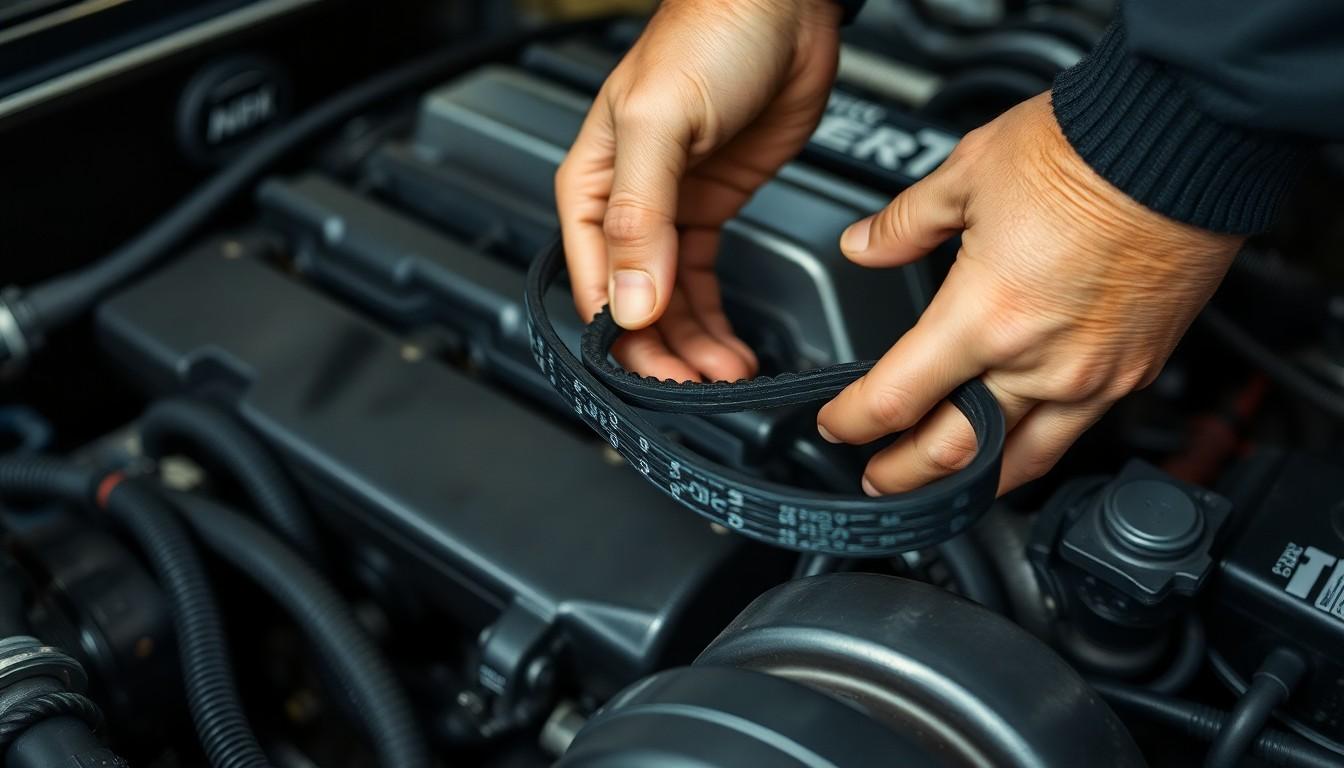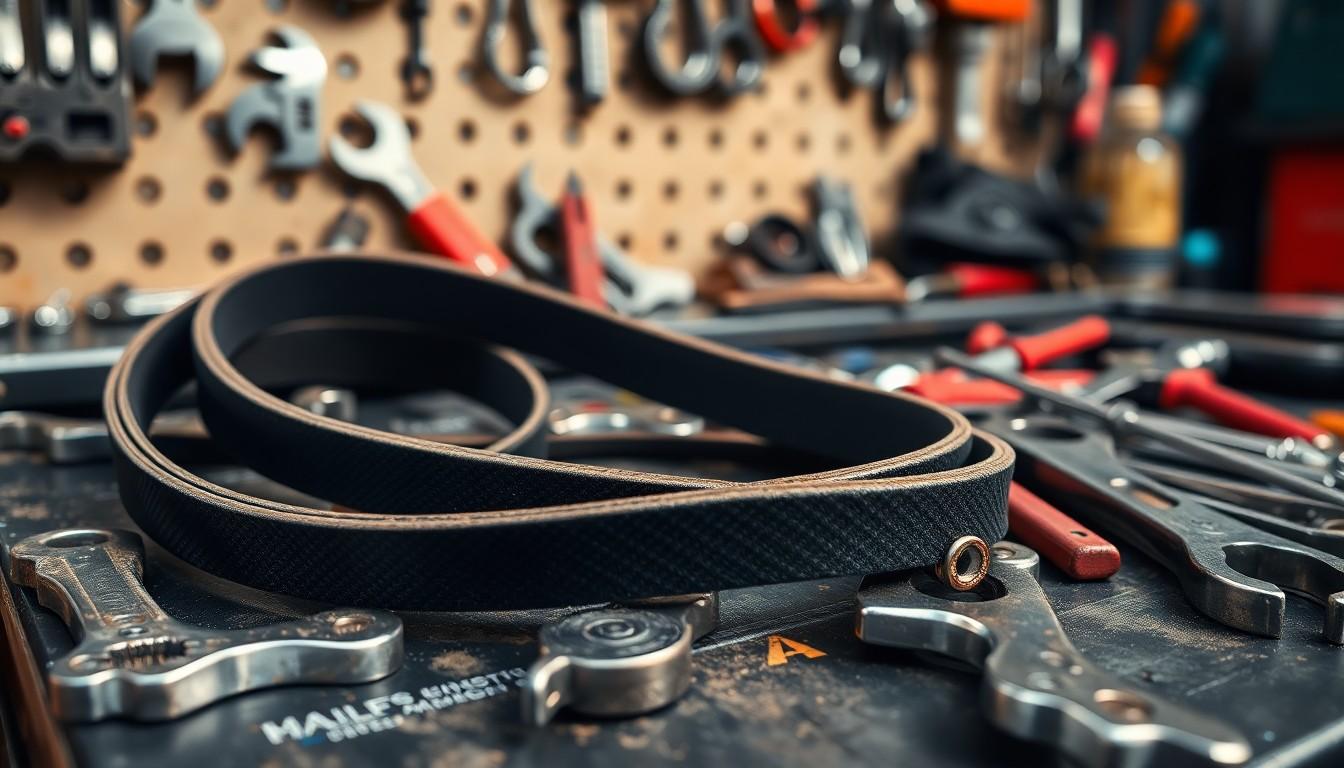Ever noticed that long, winding belt under your car’s hood? That’s the serpentine belt—one of your vehicle’s most crucial yet often overlooked components. While small in size, it’s responsible for powering multiple essential systems in your engine.
We’ve seen countless drivers stranded on roadsides because they ignored the warning signs of a failing serpentine belt. Don’t let that be you! Understanding what this belt does and recognizing when it needs replacement can save you from expensive repairs and inconvenient breakdowns. In this guide, we’ll walk you through everything you need to know about this vital car component.
What Is a Serpentine Belt and Why Is It Important
A serpentine belt is a long, winding rubber belt that connects and drives multiple components in your car’s engine. Unlike older models that used several belts, modern vehicles typically employ a single serpentine belt to power essential systems including the alternator, power steering pump, air conditioning compressor, and water pump. These belts are made from durable rubber compounds reinforced with fiberglass or polyester cords, enabling them to withstand high tension and engine temperatures.
The importance of this unassuming component can’t be overstated. Your serpentine belt transfers power from the engine’s crankshaft to peripheral devices that keep your vehicle functioning properly. Without a working belt, your battery won’t charge, your engine might overheat, power steering can fail, and air conditioning will stop working. Many drivers don’t realize that this single part simultaneously powers so many critical systems until it fails.
Regular inspection of your serpentine belt reveals its condition through visible signs like cracks, fraying, or glazing on the ribbed surface. Most manufacturers recommend replacing these belts every 60,000 to 100,000 miles, though this varies by vehicle make and model. Environmental factors such as extreme temperatures, oil contamination, and moisture exposure can significantly reduce a belt’s lifespan, necessitating more frequent replacements.
The Function of a Serpentine Belt in Your Vehicle

The serpentine belt serves as a critical power transfer mechanism in your vehicle’s engine system. This single, continuous belt transfers power from the engine’s crankshaft to multiple peripheral devices, ensuring your car operates smoothly and efficiently.
Components Powered by the Serpentine Belt
Several essential vehicle components rely on the serpentine belt for power. The alternator keeps your battery charged and powers all electrical components throughout your vehicle. Your power steering pump, which makes turning the steering wheel easier, depends entirely on this belt for operation. The water pump circulates coolant from the radiator to the engine, preventing dangerous overheating situations. Your air conditioning compressor can’t function without proper belt power, leaving you without climate control when the belt fails. In some vehicle models, the serpentine belt also powers the air pump for emissions control systems. Each of these components performs crucial functions that directly impact your driving experience and vehicle reliability.
How the Serpentine Belt Works With Pulleys
The serpentine belt operates through an intricate system of pulleys connected to various engine components. Your engine’s crankshaft pulley serves as the primary driver, transferring rotational energy to the belt as the engine runs. Multiple accessory pulleys attach to different components like the alternator and power steering pump, receiving power as the belt wraps around them in a snake-like pattern. Idler pulleys press against the back of the belt, creating the characteristic serpentine path and ensuring proper contact with all component pulleys. An automatic belt tensioner – typically spring-loaded or hydraulic – maintains optimal tension on the belt, preventing issues like slipping, squealing, or overheating. Continuous movement characterizes this system whenever your car is running, with the belt constantly transferring power to keep all connected accessories functioning properly.
Signs of a Failing Serpentine Belt

Serpentine belt failure rarely happens without warning signs. Recognizing these early indicators can save you from expensive repairs and being stranded on the road.
Visual Indicators of Wear and Tear
Visual inspection provides clear evidence of serpentine belt deterioration when your car is turned off. Cracks or frays appearing on the belt surface signal advancing wear that compromises belt integrity. Worn or damaged ribs on the underside of the belt reduce its ability to grip pulleys effectively, causing slippage during operation. Signs of misalignment, such as uneven wear patterns or belt tracking issues, indicate improper tension or pulley problems. Discoloration or brittleness of the rubber suggests the belt has deteriorated due to age, heat exposure, or chemical contamination. These visible warning signs help determine if your serpentine belt needs immediate replacement before catastrophic failure occurs.
Performance Issues Related to Belt Problems
Performance issues often accompany a failing serpentine belt and affect multiple vehicle systems simultaneously. Squeaking, squealing, or chirping noises emerge from under the hood when the belt slips or rubs against components. Dashboard warning lights, including check engine or battery indicators, illuminate when belt-driven systems malfunction. Air conditioning performance decreases or fails completely as the belt loses its ability to properly drive the compressor. Power steering becomes increasingly difficult to use, making the vehicle harder to control, especially at low speeds. Engine temperature rises abnormally or reaches overheating levels due to an improperly functioning water pump. The distinctive smell of burnt rubber often permeates the cabin or engine bay, indicating severe belt wear or excessive friction. Complete electrical system failures can occur as the alternator loses power, potentially leading to battery drainage and engine shutdown in severe cases.
Serpentine Belt Maintenance and Replacement

Regular maintenance of your vehicle’s serpentine belt ensures optimal engine performance and prevents unexpected breakdowns. A well-maintained serpentine belt keeps all essential engine components functioning properly, from the alternator to the power steering pump.
Recommended Maintenance Schedule
Serpentine belts require periodic inspection to identify potential issues before they lead to failure. Most manufacturers recommend inspecting the belt every 50,000 to 90,000 miles, though this varies based on your exact vehicle and driving conditions. Regular visual checks can identify common signs of wear such as cracks, frays, or excessive wear on the belt’s ribs. It’s equally important to check the belt tensioner and idler pulleys for proper alignment and function, as these components directly affect belt performance.
External factors significantly impact your serpentine belt’s lifespan. Exposure to engine oil or coolant leaks can rapidly deteriorate the belt material, while extreme temperatures—both hot and cold—reduce its durability. These environmental challenges make routine inspections even more crucial for ensuring reliable vehicle operation.
DIY vs. Professional Replacement
Replacing a serpentine belt can be tackled as a DIY project if you have basic mechanical knowledge. The process typically involves loosening the tensioner, removing the worn belt, and installing a new one following the correct routing path. Ensuring proper tension during installation is critical for the belt’s performance and longevity. Many vehicles have a routing diagram under the hood or in the owner’s manual to guide you through the exact configuration.
Professional replacement becomes advisable for complex belt routings or if you’re uncomfortable with mechanical tasks. Certified mechanics bring expertise in selecting the correct belt type and size for your exact vehicle model. Professionals can also thoroughly inspect related components such as pulleys and tensioners that might need attention. Using the wrong belt type or improper installation techniques can lead to premature failure and potential damage to other engine components.
Taking photographs of the original belt routing before removal provides a helpful reference during a DIY replacement. This simple step prevents routing errors that could cause immediate belt failure or damage to engine accessories. The correct serpentine belt is essential—consulting your vehicle’s manual ensures you purchase the appropriate replacement that matches your engine’s exact requirements.
Cost Considerations for Serpentine Belt Service

Replacing a serpentine belt involves several cost factors that vehicle owners should understand. Labor costs typically range between $75 and $120 for professional mechanics to remove the old belt and install a new one. The replacement belt itself starts around $20, though prices vary based on your exact vehicle model and the brand of belt you choose.
Total expenses for serpentine belt replacement generally fall between $95 and $140, but this range can extend higher depending on your vehicle’s configuration and any additional repairs needed. Many factors affect the final price, including your location, the auto shop you select, and your vehicle’s make and model.
Underlying issues often contribute to additional costs when replacing a serpentine belt. Oil or coolant leaks can damage your belt prematurely and must be addressed before installing a new one, adding to the overall repair bill. These leaks typically require separate diagnosis and repair, increasing both labor time and parts expenses.
Preventative maintenance remains more economical than emergency repairs in most cases. Regular inspections help identify potential problems before they lead to complete belt failure and the resulting damage to other components. Addressing minor issues early often saves hundreds of dollars compared to the costs of towing and extensive repairs following a belt failure on the road.
Conclusion
The serpentine belt may be small but it’s mighty in importance for your vehicle’s performance and reliability. By understanding its function and maintaining it properly you’re protecting vital systems from the alternator to the water pump.
Regular inspections every 50,000-90,000 miles can save you from unexpected breakdowns and more expensive repairs down the road. Whether you choose DIY replacement or professional service the investment is minimal compared to the potential consequences of belt failure.
We hope this guide helps you recognize the value of this essential component and empowers you to make informed decisions about your vehicle’s maintenance. A little attention to your serpentine belt today means a smoother and more reliable drive tomorrow.
Frequently Asked Questions
What is a serpentine belt and why is it important?
A serpentine belt is a long, winding rubber belt that connects and powers multiple components in your vehicle’s engine, including the alternator, power steering pump, water pump, and air conditioning compressor. It’s crucial because without a functioning serpentine belt, these essential systems will fail, potentially leaving you stranded with a dead battery, overheated engine, and loss of power steering and AC.
How often should I replace my serpentine belt?
Most manufacturers recommend replacing the serpentine belt every 60,000 to 100,000 miles. However, this interval can vary based on your specific vehicle, driving conditions, and environmental factors. Regular inspections are essential regardless of mileage, as extreme temperatures and exposure to engine fluids can accelerate wear.
What are the signs of a failing serpentine belt?
Look for visible cracks, fraying edges, or discoloration on the belt. You might also notice unusual squealing noises from the engine, dashboard warning lights, decreased air conditioning efficiency, difficulty steering, or engine overheating. These warning signs rarely appear suddenly and indicate the need for immediate inspection and possible replacement.
Can I replace a serpentine belt myself?
Yes, replacing a serpentine belt can be a DIY project if you have basic mechanical knowledge. Take photos of the original belt routing before removal, consult your vehicle’s manual for the correct replacement belt, and follow proper installation procedures. However, for complex engine configurations or if you’re uncomfortable with mechanical tasks, professional replacement is recommended.
How much does it cost to replace a serpentine belt?
The typical cost ranges from $95 to $140 total. The belt itself generally costs $20-25, while labor charges run between $75-120. Costs can vary based on your vehicle make and model. If underlying issues like oil leaks or pulley problems are present, repairs can be more expensive. Preventative maintenance is always more economical than emergency repairs.
How does the serpentine belt system work?
The system works through a network of pulleys, with the crankshaft pulley as the primary driver. When your engine runs, this pulley rotates the serpentine belt, which transfers power to various components like the alternator and water pump. Idler pulleys maintain optimal tension on the belt. This continuous movement ensures all connected accessories function properly during vehicle operation.
What factors affect serpentine belt lifespan?
Several factors impact belt durability: exposure to extreme temperatures, engine oil or coolant leaks that can deteriorate the rubber, belt tension issues, and pulley misalignment. Environmental conditions like heat, cold, and humidity also play significant roles. Regular inspection of not just the belt but also related components like tensioners and pulleys helps maximize belt life.
What happens if my serpentine belt breaks while driving?
If your serpentine belt breaks while driving, you’ll immediately lose power steering, making the vehicle difficult to control. Your engine will begin overheating as the water pump stops functioning, and your battery will stop charging. You’ll have limited driving time before the engine overheats or the battery depletes. Pull over safely as soon as possible and call for assistance.

